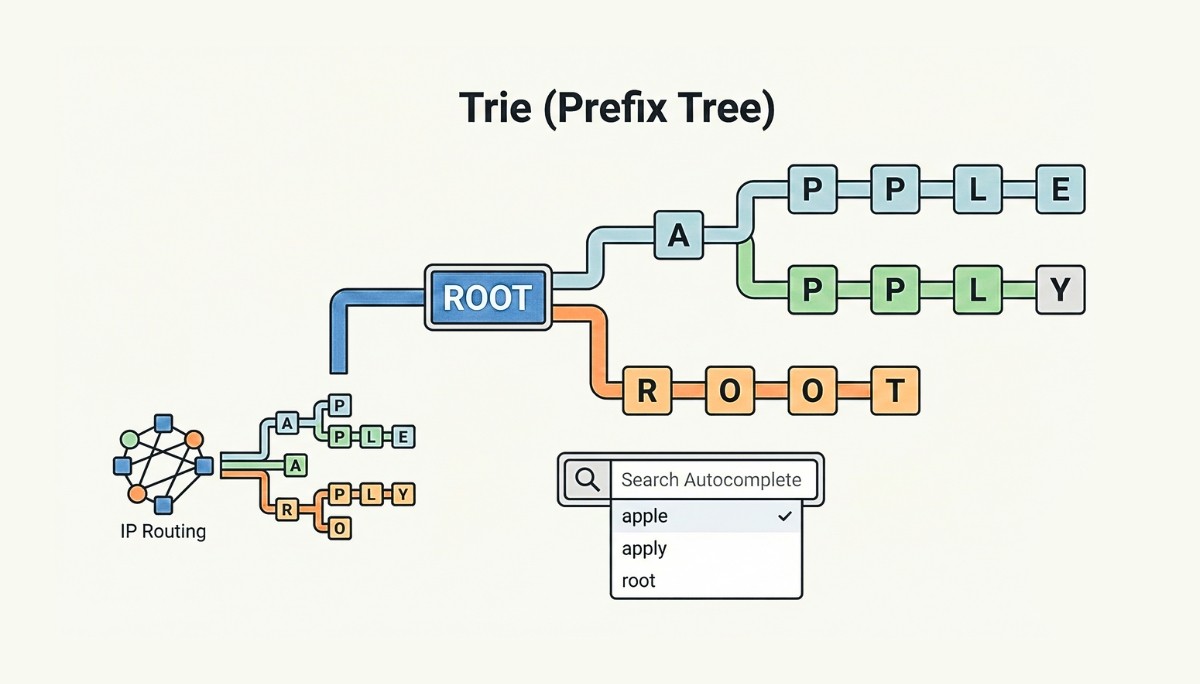Anaconda for Python: What It Is and Why Developers Use It
By
Liz Fujiwara
•
Sep 25, 2025
Anaconda software for Python is a game-changer for anyone working in data science, machine learning, or scientific computing. It provides a comprehensive platform that simplifies package management and environment setup, eliminating common headaches associated with dependency conflicts and installation issues. With Anaconda, users gain instant access to thousands of Python tools and libraries, from popular data analysis packages like Pandas and NumPy to machine learning frameworks such as scikit-learn and TensorFlow. Designed for both beginners and experts, Anaconda streamlines workflows, enabling faster experimentation, seamless collaboration, and more efficient project development. Its integrated tools and intuitive interface make it easier than ever to focus on solving complex problems rather than managing software setups.
Key Takeaways
Anaconda is a comprehensive Python distribution designed for data science, featuring a user-friendly interface, package management through Conda, and over 12,000 pre-loaded libraries.
Its advantages include easy setup, efficient dependency management, and streamlined project initiation, making it especially beneficial for both beginners and experienced developers working in machine learning and data analysis.
Drawbacks include a large installation footprint and no notable performance improvements over standard Python, requiring users to carefully consider their specific environment and project requirements.
What is Anaconda Software for Python?

Anaconda is more than just a Python distribution; it is a powerful tool designed to meet the needs of data scientists, statisticians, and researchers. Available on Windows, macOS, and Linux, Anaconda simplifies scientific computing, data analysis, and machine learning. By offering a comprehensive environment with essential tools and libraries, it appeals to both beginners and experienced professionals.
One of Anaconda’s standout features is its user-friendly interface, which makes it particularly accessible to newcomers. Its ease of setup and robust package management system help eliminate many common hurdles faced when starting with Python programming. This accessibility has contributed to its widespread adoption across industries, including data science, machine learning, academia, and research organizations.
Anaconda’s focus on scientific computing and data analysis means it comes pre-loaded with numerous powerful tools and libraries essential for data-driven projects. This comprehensive suite ensures that users have everything they need at their fingertips, allowing them to focus on research and development without worrying about compatibility issues or package dependencies.
Key Features of Anaconda
Anaconda offers several key features that distinguish it from other Python distributions.
At the core of Anaconda is Conda, a powerful package manager that enables seamless installation and updating of Python packages. Conda can manage both Python and non-Python dependencies, making it a robust solution for handling libraries and ensuring compatibility across different projects.
Another standout feature is Anaconda Navigator, a user-friendly graphical interface that simplifies the management of packages and environments. Navigator allows users to easily install, update, and remove packages, as well as create and manage project environments without using command-line tools.
Additionally, Anaconda provides access to over 12,000 vetted Python packages, offering a vast repository of tools and libraries to improve data science workflows.
Advantages of Using Anaconda
One of the primary advantages of using Anaconda is its ease of setup and use. The installation process is straightforward, guiding users through the necessary steps to get up and running quickly. This is particularly helpful for beginners who may find the initial setup of a Python environment daunting.
Anaconda’s robust package management system is another major benefit. The Conda package manager simplifies the installation and updating of packages while ensuring compatibility between different libraries and tools, including open-source packages. This is especially important for data science and machine learning projects, where integrating multiple packages is often required.
The Anaconda Distribution provides a curated selection of data science and machine learning tools, giving users access to the latest and most compatible libraries. Users can begin projects immediately with pre-installed packages and libraries, avoiding the need to manually install and configure each tool. This streamlined approach saves time, reduces compatibility issues, and makes Anaconda an ideal choice for data-driven applications.
Disadvantages of Using Anaconda
While Anaconda offers numerous benefits, it does have some drawbacks. One of the main concerns is its large installation footprint. The comprehensive suite of tools and libraries requires significant disk space, which may be an issue for users with limited storage. This can make Anaconda less suitable for devices with restricted capacity.
Additionally, despite its extensive features, Anaconda does not significantly improve the performance of Python programs. While it provides a good environment for data science and machine learning, it does not offer performance improvements over standard Python. Users should consider these factors when deciding if Anaconda is the right choice for their specific needs.
Comparing Anaconda and Standard Python

Anaconda and standard Python serve different purposes and cater to different audiences within the Python ecosystem. Anaconda is a comprehensive Python distribution designed specifically for data science, offering a suite of tools and libraries tailored to this field. In contrast, standard Python is a versatile, general-purpose programming language suitable for a broader range of applications, providing more flexibility and control over environment and package management.
While Anaconda offers a guided and user-friendly setup process, standard Python requires a more manual approach to installation and package management. This difference can be an important factor for users, depending on their level of expertise and specific project requirements. Understanding the key differences, benefits, and drawbacks of each can help developers choose the right tool for their needs.
Installation and Setup Differences
Installing Anaconda is straightforward thanks to its interactive installer, which guides users through each step. This installer is available for Windows, macOS, and Linux, ensuring broad compatibility. After installation, users can set up their first project by creating new Conda environments and installing the necessary packages for their specific needs. This guided approach contrasts with the more manual setup required for standard Python, where users must independently manage package installations and environment configurations.
With standard Python, the installation process involves downloading the appropriate version from the official Python website and manually configuring the environment. While this approach offers flexibility, it can be more time-consuming, especially for beginners. Anaconda’s guided setup streamlines these steps, making it an attractive option for users who prefer a more user-friendly experience.
Package Management and Environment Handling
One of Anaconda’s standout features is its package management and environment handling capabilities, primarily facilitated by the Conda package manager. Conda allows users to create isolated environments with specific dependencies for each project, ensuring that libraries and tools do not conflict with one another. This is particularly useful for data science projects, where different projects may require different versions of the same library.
Standard Python, in contrast, relies on pip and virtualenv for package and environment management. While these tools are powerful and flexible, they do not offer the same level of integration and ease of use as Conda. Conda’s ability to manage both Python and non-Python dependencies, along with its support for multiple Python versions, makes it a stronger solution for managing complex coding projects.
Use Cases in Development and Data Science
Anaconda is particularly well-suited for data science and machine learning projects due to its extensive library of pre-installed packages. This convenience allows users to start working on their projects immediately without needing to manually install and configure each package. However, this extensive library can also lead to increased overhead, potentially affecting performance in smaller projects.
Despite this, Anaconda’s flexibility in supporting various integrated development environments (IDEs) makes it a valuable tool for developers. Whether using Jupyter Notebooks, Spyder, or other IDEs, Anaconda provides a seamless experience that enhances productivity and collaboration.
This combination of flexibility and ease of managing packages and environments makes Anaconda an ideal choice for a wide range of data science and software development projects.
Why Developers Choose Anaconda for Data Science

Anaconda serves as a platform specifically designed for data science, offering an open-source distribution of both Python and R. The platform provides essential tools and libraries that streamline the development of data science and machine learning projects. Anaconda’s comprehensive suite simplifies the management of machine learning workflows, allowing developers to focus on their core tasks.
One of the key reasons developers choose Anaconda is its ability to provide an integrated environment that simplifies package management and environment setup. Anaconda enables developers to efficiently manage machine learning workflows, from development and training to evaluation and deployment.
Pre-Installed Packages and Libraries
Anaconda includes:
A comprehensive suite of data science libraries such as NumPy, Pandas, and scikit-learn, allowing users to begin data analysis immediately.
An extensive library of pre-installed packages, making it an ideal choice for both newcomers and experienced developers.
The Conda package manager, which handles both Python and non-Python dependencies, provides a more robust solution for managing libraries compared to Python’s pip.
Anaconda streamlines project setup and maintenance for data science teams with complex dependencies, ensuring compatibility and up-to-date libraries. This ease of use and comprehensive package management make Anaconda a valuable tool for any data science project.
Simplified Environment Management
Managing project environments is crucial for data science workflows, and Anaconda excels in this area. The platform allows users to create multiple environments with specific Python versions, ensuring that different projects maintain isolated settings. This flexibility is essential for managing dependencies and avoiding conflicts between libraries.
Anaconda Navigator further simplifies this process by providing a user-friendly graphical interface for managing environments and packages. Users can easily create new environments, install required packages, and switch between projects without extensive command-line knowledge. This streamlined approach saves time and increases productivity, making Anaconda an attractive option for data scientists and developers.
Integration with Popular Tools
Anaconda’s seamless integration with popular tools like Jupyter Notebooks significantly improves the data science workflow. Jupyter Notebooks, known for their interactive computing environment, allow developers to create and share documents containing:
live code
equations
visualizations
narrative text
This integration makes Anaconda a powerful platform for interactive data analysis and machine learning.
Getting Started with Anaconda

Starting with Anaconda is straightforward, thanks to its comprehensive installation process, which supports various operating systems, including Windows, macOS, and Linux. The platform is designed to simplify the installation and management of Python packages and environments, making it accessible to both beginners and experienced developers.
Once installed, Anaconda provides all the necessary tools to begin Python programming immediately. Users can create new projects, manage environments, and launch applications with ease, ensuring a smooth transition from setup to development.
Installing Anaconda
Installing Anaconda involves steps tailored for each operating system, ensuring compatibility and ease of setup. Windows users start by downloading the installer from the Anaconda website and following prompts to agree to terms and select installation options.
On macOS, users can choose a graphical installer or a command-line interface for a more customized setup, typically placing Anaconda in the /opt/anaconda3 directory. The installation process for Linux is equally straightforward, involving downloading the installer and following prompts to complete the setup.
This comprehensive installation process ensures that users have a seamless experience, regardless of their operating system.
Setting Up Your First Project
Creating a new project in Anaconda is an essential step for effective project management and development. This process involves establishing a separate environment for the project and installing the required packages tailored to its specific needs. Isolated environments in Anaconda ensure efficient dependency management, reducing conflicts between projects.
Users can utilize the conda command to create virtual environments and install necessary packages, streamlining the project setup process. This allows developers to focus on coding and development rather than managing dependencies.
Launching Applications with Anaconda Navigator
Anaconda Navigator serves as a graphical interface that simplifies the management of applications and projects. Users can easily launch applications such as Jupyter Notebook and Spyder directly from the Navigator interface, eliminating the need for command-line tools. This user-friendly GUI enhances usability and accessibility, especially for those who prefer a visual approach to managing projects.
Navigator also simplifies the creation of environments and installation of packages and package versions. Users can manage their applications and environments through this interface, making it easier to track projects and ensure all dependencies are correctly managed. This object-oriented environment management system allows for effective use of an environment manager to update and maintain packages.
Anaconda for Machine Learning Projects

Anaconda is an invaluable tool for machine learning projects, offering a wide range of essential packages and libraries that facilitate model development and deployment. Including libraries such as TensorFlow, Keras, and PyTorch, Anaconda provides a robust platform for building and training machine learning models.
The platform also supports various tools for evaluating and deploying models, ensuring they are ready for real-world applications. Integrating these tools allows Anaconda to streamline the entire machine learning workflow, from development to deployment on a unified AI platform.
Essential Machine Learning Packages
Anaconda includes several popular libraries for machine learning, such as:
TensorFlow
Keras
scikit-learn
These libraries are crucial for developing machine learning models. Pre-installed packages allow developers to start their projects immediately without manually installing and configuring each tool.
The Conda package manager further enhances this experience by effectively handling package dependencies and ensuring all necessary libraries are compatible and up-to-date. This makes Anaconda an ideal platform for machine learning projects with complex dependencies.
Fonzi: Revolutionizing AI Talent Acquisition
Fonzi is transforming AI talent acquisition by connecting companies with top-tier, pre-vetted artificial intelligence engineers through its recurring hiring event, Match Day. This platform makes hiring fast, consistent, and scalable, benefiting both startups and large enterprises.
Leveraging Fonzi improves recruitment efficiency and candidate quality. Its AI-driven solutions streamline the hiring process and ensure candidates are well-matched to their roles.
How Fonzi Works
Fonzi hosts Match Day events that facilitate faster, more effective hiring by:
Connecting companies with top-tier candidates
Enabling direct interaction between companies and candidates for a dynamic hiring process
Conducting structured, unbiased evaluations to maintain assessment integrity
The platform also employs real-time fraud detection and bias auditing to ensure fair and accurate evaluations, setting Fonzi apart from traditional job boards and black-box AI tools.
Benefits for Companies and Candidates
Companies using Fonzi gain:
Shorter hiring cycles through AI-driven solutions
Access to a curated pool of higher-quality candidates
Automation of candidate screening and evaluations, allowing recruiters to focus on high-value interactions
Job seekers benefit from personalized recommendations that align their skills and career goals with available opportunities, enhancing engagement and satisfaction throughout the hiring process.
Summary
Anaconda is a powerful Python distribution offering a comprehensive suite of tools and libraries tailored for data science and machine learning projects. Its ease of setup, package management system, and integration with popular tools make it an ideal choice for developers and data scientists. Anaconda streamlines machine learning workflows from development to deployment, ensuring projects run smoothly and efficiently.
Fonzi, meanwhile, is transforming AI talent acquisition with a dynamic and efficient hiring platform. Through specialized Match Day events, structured evaluations, and AI-driven solutions, Fonzi enhances the recruitment process for both companies and candidates. User success stories and reported improvements underscore Fonzi’s transformative impact in the AI talent acquisition landscape.




